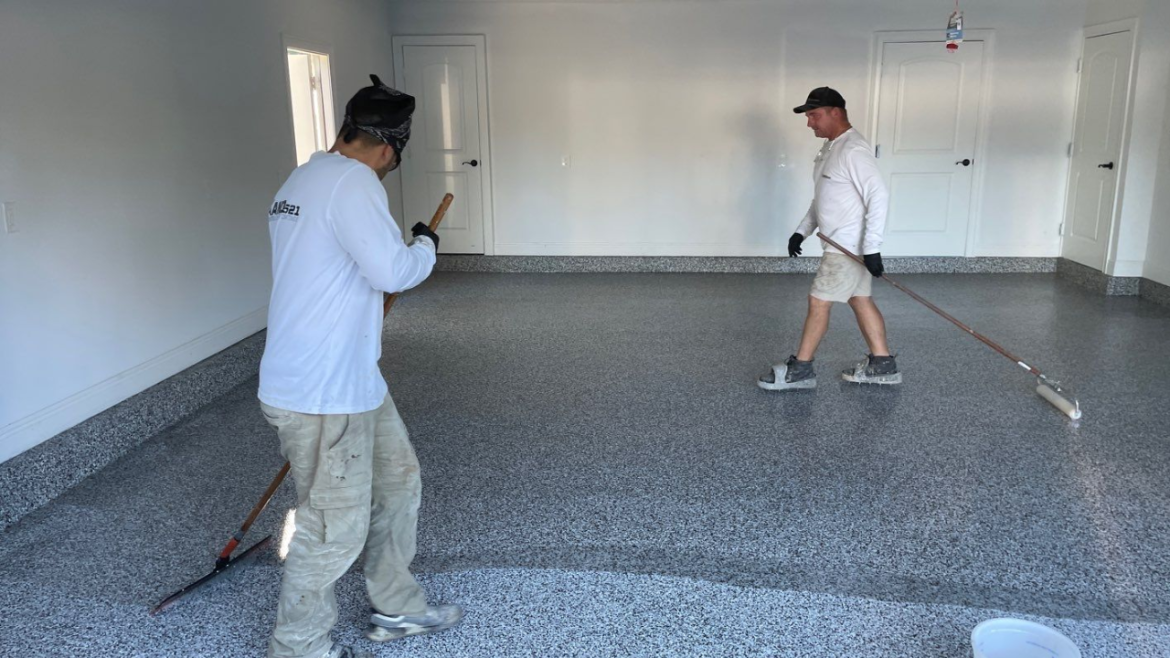The garage floors are exposed to daily risks from vehicles, heavy tools and even chemical spills. Concrete floors, despite their durability, release cracks, stains, and damage if not shielded aptly. For your garage, the polyurea garage floor coating provide a higher performance, lasting coating that is competitive on the market.
Understanding Polyaspartic Polyurea Garage Floor Coating
Polyaspartic polyurea is actually a sub-product of the polyurea family that has a rapid setting and outstanding performance. This sealer, which is used in a liquid state with a roller or brush, forms a definite bond that cannot be removed or peeled off from concrete easily. It provides a smooth, portable, and fluid material that is ideal for preserving the purity of the garage floor surface. A poly aspartic polyurea resin-based coating that provides the substance with high solids content and offers optimum performance for homes, offices, and factories.
Key Benefits of Polyaspartic Polyurea Coatings
Durability
Based on the investigations, it can be stated that the copolymer poly aspartic polyurea coatings are resistant to mechanical loads and mechanical shocks on the surface, the aftereffect of which can be, for example, an impact of fallen instruments or constant vehicle movements. The coating offers excellent wear resistance and is suitable for areas of heavy usage, such as garages and workshops.
Waterproof and Seamless Protection
After this material is applied, a protective layer is created to ensure that moisture cannot penetrate the concrete. This feature minimizes the chances of cracks resulting from expansion and contraction and protects the concrete from water impact. Its integration also reduces the chances of water penetration through seams or crevices, which would otherwise compromise the floor’s durability.
Elasticity in Extreme Temperatures
Another unique property of polyaspartic polyurea is its flexibility in freezing conditions, which other materials are unable to match. It is this material that, when taken, for instance, to the freezing temperatures of -40°C or scorching heat during the summer, does not crack or peel due to the elasticity it possesses.
Chemical Resistance
Polyaspartic polyurea works very well with the right selected top coat to protect structures in the garage from chemicals such as oil, gasoline, and cleaning solvents. Its chemical resistance ensures that the floor does not get stained or affected in any way thus providing the environment is safe.
Corrosion Protection
It serves as an anti-corrosive layer much needed in garages where metal comes into contact with concrete. It can be used both indoors and outdoors, and the corrosion protection is said to be complete with excellent irradiation.
Polyaspartic Polyurea vs. Epoxy Coatings: Which is Superior?
Temperature Resistance
Polyaspartic polyurea has better performance than epoxy in cold and humid environments. It can be used for processes at temperatures from -15 to 40ºC without additional heating from external sources. On the other hand, epoxy lacks durability at low temperatures, and it takes longer curing periods and reheating.
Application Time
Polyaspartic polyurea coatings are characterized by high reactivity and solidification that may take between 30 minutes and 5 hours. Epoxy, however, takes much longer; the curing time might even exceed 48 hours in cold environments, as this is considered a disadvantage.
Environmental Considerations
Polyaspartic polyurea is an eco-friendly coating with low VOCs and very little smell. Epoxy resins, however, produce foul odors and contain higher proportions of VOCs, making them unsuitable for enclosed environments.
UV Resistance and Longevity
In contrast to epoxy coatings, which lose their UV protection and develop cracks that lead to yellowing, PPP is stable, with no degradation and no color change, even after 15 years of use outside the building. This makes it perfect for areas subjected to direct sunlight.
Abrasion and Impact Resistance
Hence, polyaspartic coatings offer better protection against wear and tear, impact and abrasion than epoxy. This durability will allow your garage floor to stay in perfect condition regardless of how much use it has to endure.
Polyaspartic Polyurea Coating Properties and Specifications
Polyaspartic polyurea coatings consist of two parts: Part A (hardener) and Part B. Part A is usually a clear liquid with a viscosity of approximately 2000 CPS at 25°C, while Part B is slightly thicker than Part A and has a viscosity of 3500 CPS at 25°C. It is clear or RAL color. Both parts contain a great deal of solider content, where part A is 100% and part B is 95%, which contributes to the toughness and strength of the coating.
After curing, the coating possesses a Shore D hardness of 68, high abrasion values, and tensile strength of 10 MPa. Such properties make it possible for the coating to perform optimally for a long time which allows it to bond well on concrete and also be resistant to impact force.
Conclusion
To keep concrete floors protected, garage floor poly aspartic polyurea coating is the best solution because it is very durable, chemically resistant and flexible. You only have to spread them and wait for a few minutes for them to dry, and they will give you the longest-lasting results on your garage floor. Select poly aspartic polyurea as a top-quality solution for versatile protective coating with outstanding, long-term performance.

